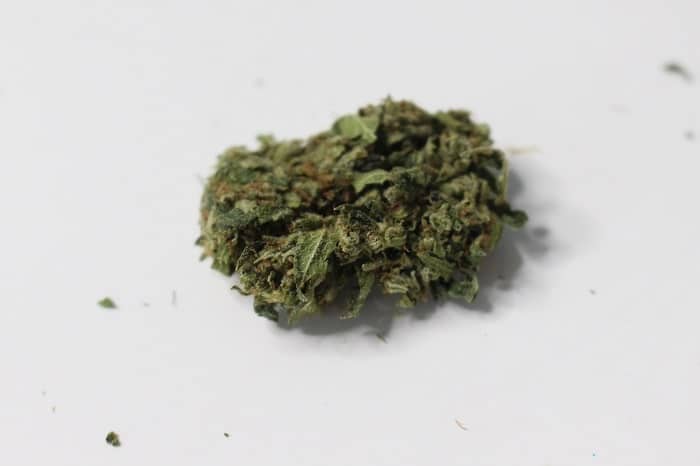
Apart from the well-known CBD and THC, the names of a few other cannabinoids are coming to the fore more and more often. Among them, the CBN, or cannabinol. Directly linked to THC, it is however still relatively unknown. Yet it could well lead particularly interesting effects and that the scientific community could very quickly exploit. The Weedy team tells you all about cannabinol (CBN)!
Cannabinol: definition
CBN, or cannabinol, is a so-called minor cannabinoid, in opposition to the cannabinoids most widely produced by cannabis, and also the best known: CBD (cannabidiol), THC (tetrahydrocannabinol) or even CBG (cannabigerol). One could obviously think that it is considered a minor because it is less present in the plant. This is partly true. Specifically, it is not directly produced by cannabis. Rather, it is an advanced form of THC. So when this psychoactive molecule ages, for example when the product is exposed to the sun or too long exposed to air and light, THC turns into CBN.
Besides, if we want to be really precise, the raw cannabis plant (standing or just cut) does not contain THC either, but THCA, its acid form. When you smoke or vaporize THCA, it first turns into THC. Over time, THC in turn turns into CBN. A degradation of THC : this is arguably the simplest definition of CBN.
Very good, but what does this imply for the consumer and is it really important to have some notions of chemistry before consuming a product derived from cannabis? Well no, but some basic knowledge of effects of CBN are nevertheless useful.
What are the effects of CBN?

The problem with so-called minor cannabinoids is that they are even less well known than the heavyweights THC (narcotic) and CBD (legal). This is true for CBN, which is still the subject of far too little research to speak out in a frank and confident manner on its effects. However, the current state of scientific research already suggests some potential benefits to be exploited through the use of cannabinol.
Glaucoma and other eye problems
CBN but also its cousin CBG (cannabigerol) could both prove useful in the treatment of eye diseases. A 1984 study, carried out only on cats, showed that the two cannabinoids had a positive effect on reducing intraocular pressure. Another study led to similar conclusions, this time in rabbits. Strain in the eye is also the number one risk factor for developing glaucoma. The results of these studies are only a first step in the research and to date have not proven that CBN is a potential treatment, nor that it could lead to better results than the current medication. It is nevertheless an interesting avenue which will certainly be explored in the future.
Skin problems
Other studies point to the effects of CBN on the skin. As a first step, it could, by reducing the overgrowth of skin cells, limit certain skin problems. Like other cannabinoids, including cannabidiol used in particular as a treatment against acne, it could also contribute to relieve skin irritation and calm both the discomfort and the redness.
Loss of appetite
Smoking cannabis makes you hungry, we’ve all heard it and, unlike other information that is widely circulated about cannabis, this one is absolutely true. Directly derived from THC, CBN may well have similar properties. In particular, a 2012 study found that rats that consumed CBN not only ate more willingly, but also ate larger amounts. The renewed appetite enabled by cannabinoids is therefore of interest to the scientific community, which hopes to find new solutions for help patients with serious pathologies (cancer and AIDS in particular) to regain a normal diet.
Other effects of cannabinol
In addition to the effects mentioned above, CBN could also make us benefit from various effects often associated with other cannabinoids. Its main advantage, just like cannabidiol, is that it does not induce highs like CBD and unlike THC. On the other hand, it would be notably antibacterial, anticonvulsant, neuroprotective and anti-inflammatory.
CBN is a powerful sedative: info or poison?

Among the many urban legends circulating in the modern cannabis market, there is one that has a tough skin: CBN would be a powerful sedative, capable of knocking out the most insomniac of its consumers. As often, this is a story that lacks nuance to say the least and could well turn out to be untrue.
We do not have to dig very far to realize that this reputation is in fact mainly due to a mini-study dating back to 1975 and during which only five individuals were tested. While it is true that sedative effects have been noted, it should be specified that the testers consistently consumed CBN in combination with THC. However, it seems, in view of the more in-depth research that THC has benefited from, that it does indeed have a sedative effect.
Regarding cannabinol, nothing is less certain. Thanks to its anti-inflammatory effects in particular, it therefore contributes to relaxation, and potentially to falling asleep. It could, however, not be a direct sedative.
Is CBN Legal?
That’s a good question. As is often the case in terms of the constituents of cannabis, an appropriate answer would be: welcome to gray area ! Indeed, in the strict sense, CBN is not listed as a United Nations Controlled Substance. However, it is derived directly from THC, which is considered a narcotic by many countries, including the whole of the European Union. With its development in the market, there is no doubt that national laws should gradually clarify its status. Waiting, it is in any case not illegal.








